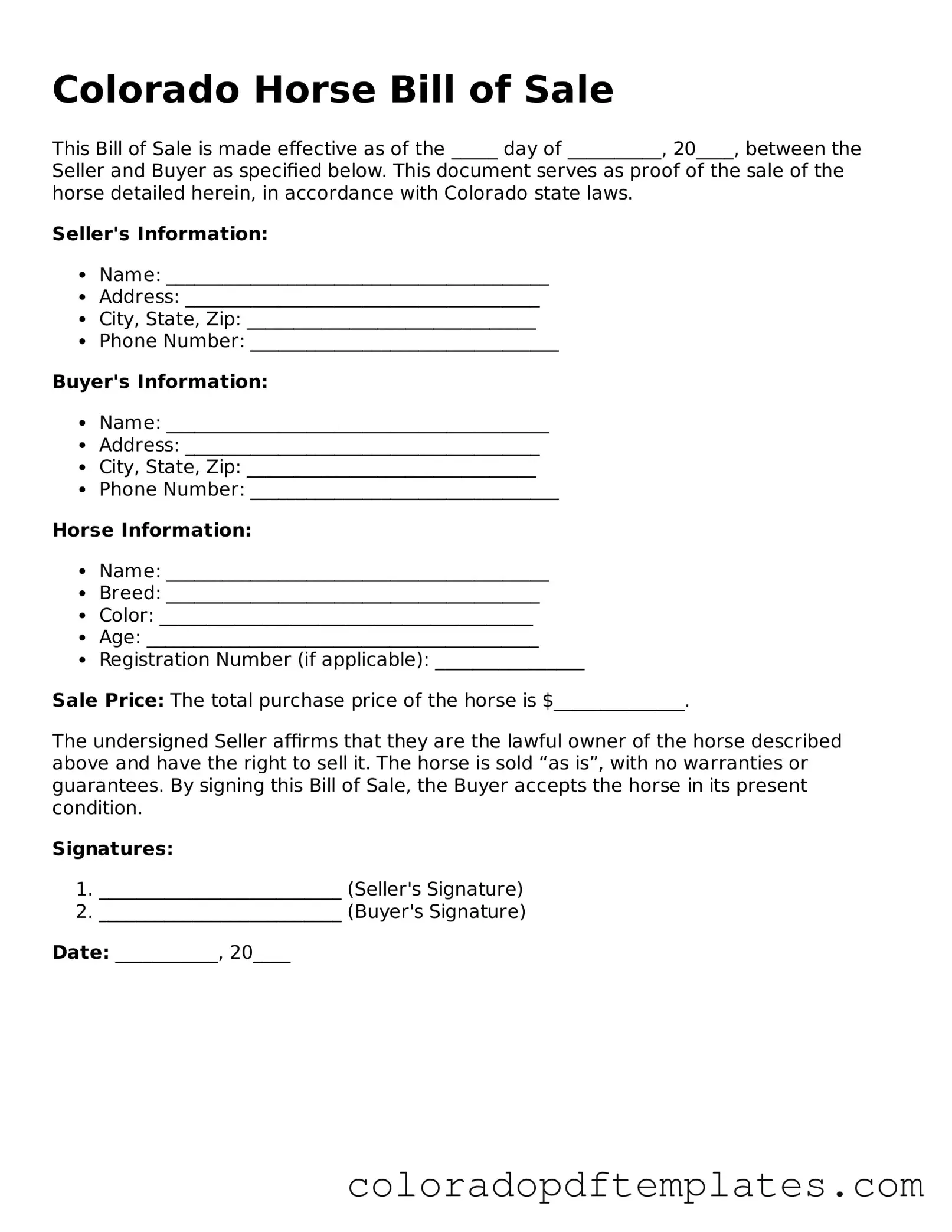What is a Colorado Horse Bill of Sale?
A Colorado Horse Bill of Sale is a legal document that records the sale and transfer of ownership of a horse. This document provides essential details about the transaction, including information about the buyer, seller, horse, and sale price. It serves as proof of ownership and can be important for future transactions or legal purposes.
Why is a Horse Bill of Sale important?
This document protects both the buyer and seller. It helps clarify the terms of the sale and provides a record of the transaction. If any disputes arise regarding ownership or the condition of the horse, the Bill of Sale can serve as evidence in resolving those issues.
The following information should be included:
-
Names and addresses of both the buyer and seller
-
Description of the horse (breed, age, color, markings, etc.)
-
Sale price
-
Date of sale
-
Any warranties or guarantees regarding the horse's health or behavior
Do I need to have the Bill of Sale notarized?
Notarization is not required for a Horse Bill of Sale in Colorado. However, having the document notarized can add an extra layer of authenticity and may be beneficial if disputes arise in the future.
Is a Horse Bill of Sale required by law in Colorado?
While a Horse Bill of Sale is not legally required in Colorado, it is highly recommended. Without it, proving ownership can become difficult, especially if there are disagreements about the sale or the horse's condition.
Can I use a generic Bill of Sale template?
Yes, you can use a generic Bill of Sale template, but it is advisable to ensure that it includes all necessary details specific to the horse sale. Customizing the document to meet your needs will help avoid any potential issues later on.
What happens if the horse has health issues after the sale?
The Bill of Sale can outline any warranties or guarantees regarding the horse's health. If the seller has provided specific assurances, they may be held accountable if the horse has undisclosed health issues. However, if the sale is "as is," the buyer may have limited recourse.
How do I complete a Horse Bill of Sale?
To complete a Horse Bill of Sale:
-
Gather all necessary information about the horse and the parties involved.
-
Fill out the form, ensuring all details are accurate and complete.
-
Both the buyer and seller should sign the document.
-
Consider having the document notarized for added security.
